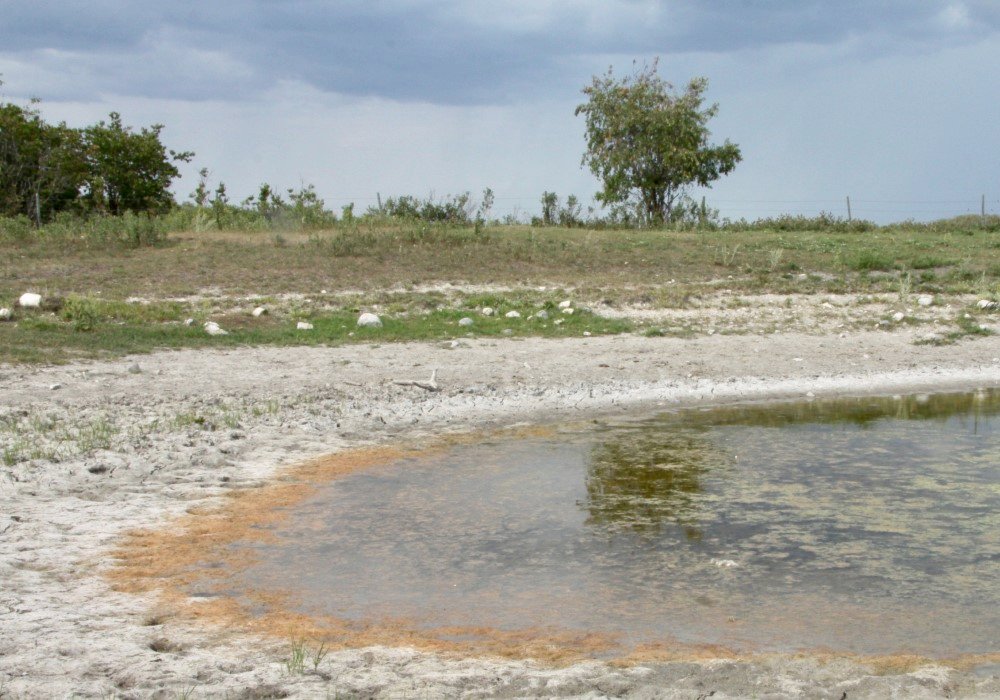Poor water quality linked to sulfate levels

This summer, testing water might become a necessity for livestock producers.
Hundreds of dugouts across the eastern Prairies are half-full of water, or nearly empty, because of minimal snowfall this winter.
When dugouts and other water sources are low, water quality usually drops.
“If they (producers) are looking at lower levels… that can sneak up on someone,” said Jenay Werle, livestock and feed specialist with Saskatchewan’s ministry of agriculture in Yorkton.
“There are health implications to poor water. It can show it as reproductive failure or other nutritional issues.”
Dugouts in the Yorkton region and many other parts of Saskatchewan are below normal. But conditions are worse to the south, as many livestock producers around Moosomin are coping with nearly empty and dried-out dugouts, Werle said.
Poor water quality is often linked to high levels of sulfates. When concentrations of sulfates get too high in livestock water, the salts can tie up other trace minerals within the animal so they can’t be adequately used. Those trace minerals include copper, zinc and manganese, which are important for fertility, milk production, reproduction and energy.
Carla Hicks, of DC Land and Cattle near Mortlach, Sask., has seen the impact of poor water quality.
In a 2020 video presentation, she told the story of cattle drinking from a dugout with high sulfate levels.
“We ended up with cows coming down with polio and we also had some issues with nursing calves so that was really a light bulb moment for us,” said Hicks, as reported by the Beef Cattle Research Council.
Hicks learned a lesson and now routinely tests water on her ranch.
Many producers, though, do not.
In 2019, the BCRC said less than half of farmers test their livestock water.
“(Surveys) indicate most Canadian farmers need to test water more often,” the BCRC said August 2019. “In Western Canada, 59 percent of producers reported they don’t test their water and only 17-41 percent of Quebec and Ontario producers reported testing water once every five years.”
For producers who have never tested their water, or have rarely done in the past, it’s fairly easy to do in Saskatchewan.
Farmers can take a one-litre sample and drop it off at a Saskatchewan Agriculture regional office. If the regional office is too far away, farmers can take water samples to their local Sask. Crop insurance office. The samples are then sent to a regional office for screening.
“In our regional offices (at Sask. Ag)… we all have water probes. We can do a screening test, right away,” Werle said. “That screening test… it’s like a pass/fail. If the water conductivity is low enough, we can be fairly confident that the water is safe to use.”
Testing for conductivity is a rapid way to check water quality.
Dissolved salts and other inorganic chemicals conduct an electrical current. When the amount of minerals in the water increases, so does the conductivity.
Ideally, producers should take a water sample early in the grazing season to establish a baseline of water quality. If the conductivity increases in subsequent tests, there could be a problem.
“If you start with an electro conductivity of say 1,000 and you’re watching it slowly climb to 1,500, 2,000, 2,500… you know those minerals are concentrating (in the water),” Werle said.
But conductivity is only a rough estimate of water quality.
Some producers test their own water with handheld conductivity meters. They can be a useful tool, if properly calibrated.
In 2017, livestock specialists with Sask Ag found that handheld meters have several limitations:
• Meters must be tested against lab results to maintain accuracy.
• Meters/probes have lifespans and should be replaced according to manufacturer specifications.
• Conversion factors used to calculate total dissolved solids from conductivity can be misleading
Submitting a water sample to a regional ag office is a good start. But in some cases the water will need further testing at a laboratory.
The turnaround time for a complete lab test is a week to 10 days in Saskatchewan.
Contact robert.arnason@producer.com
Source: producer.com

